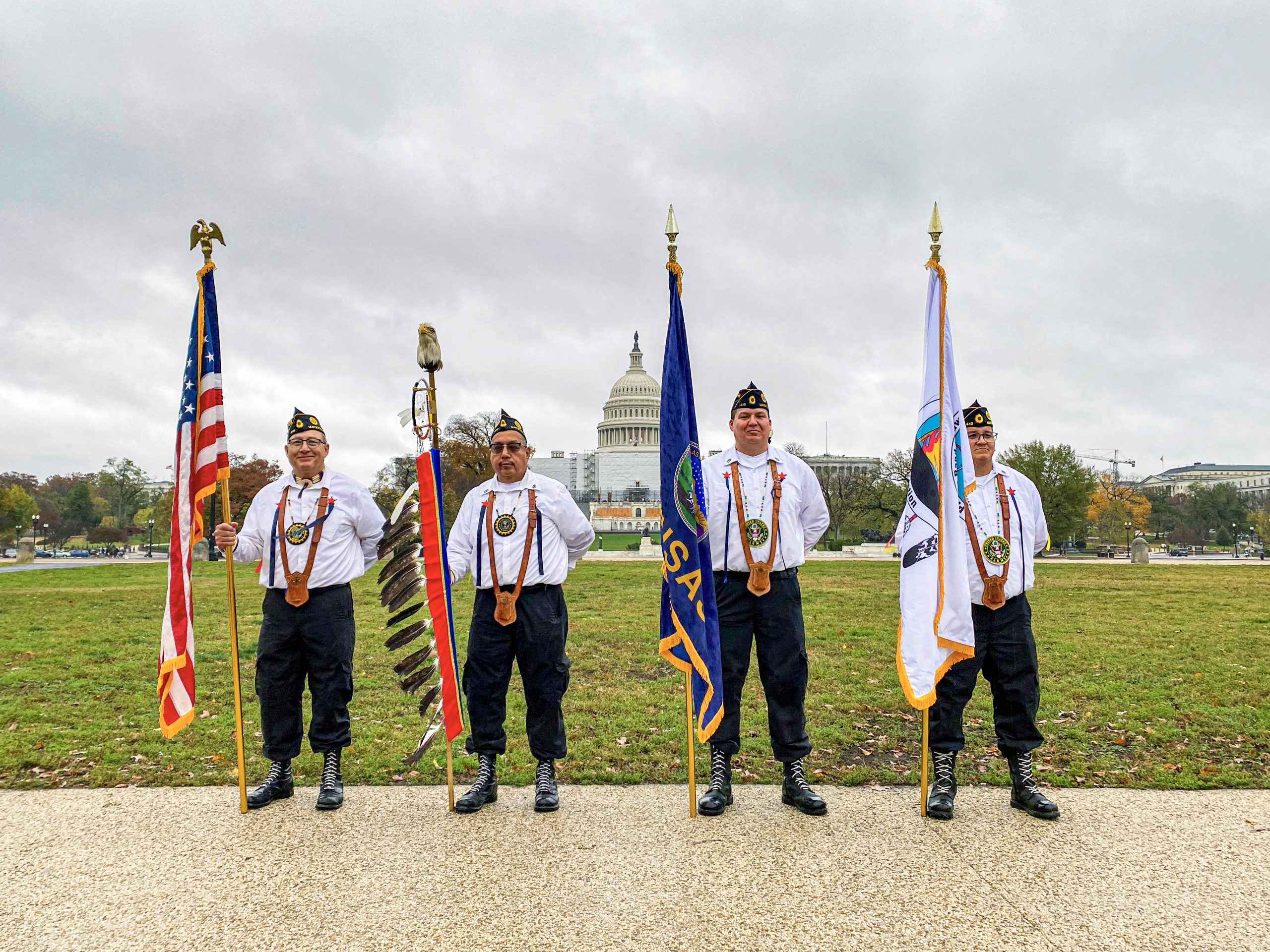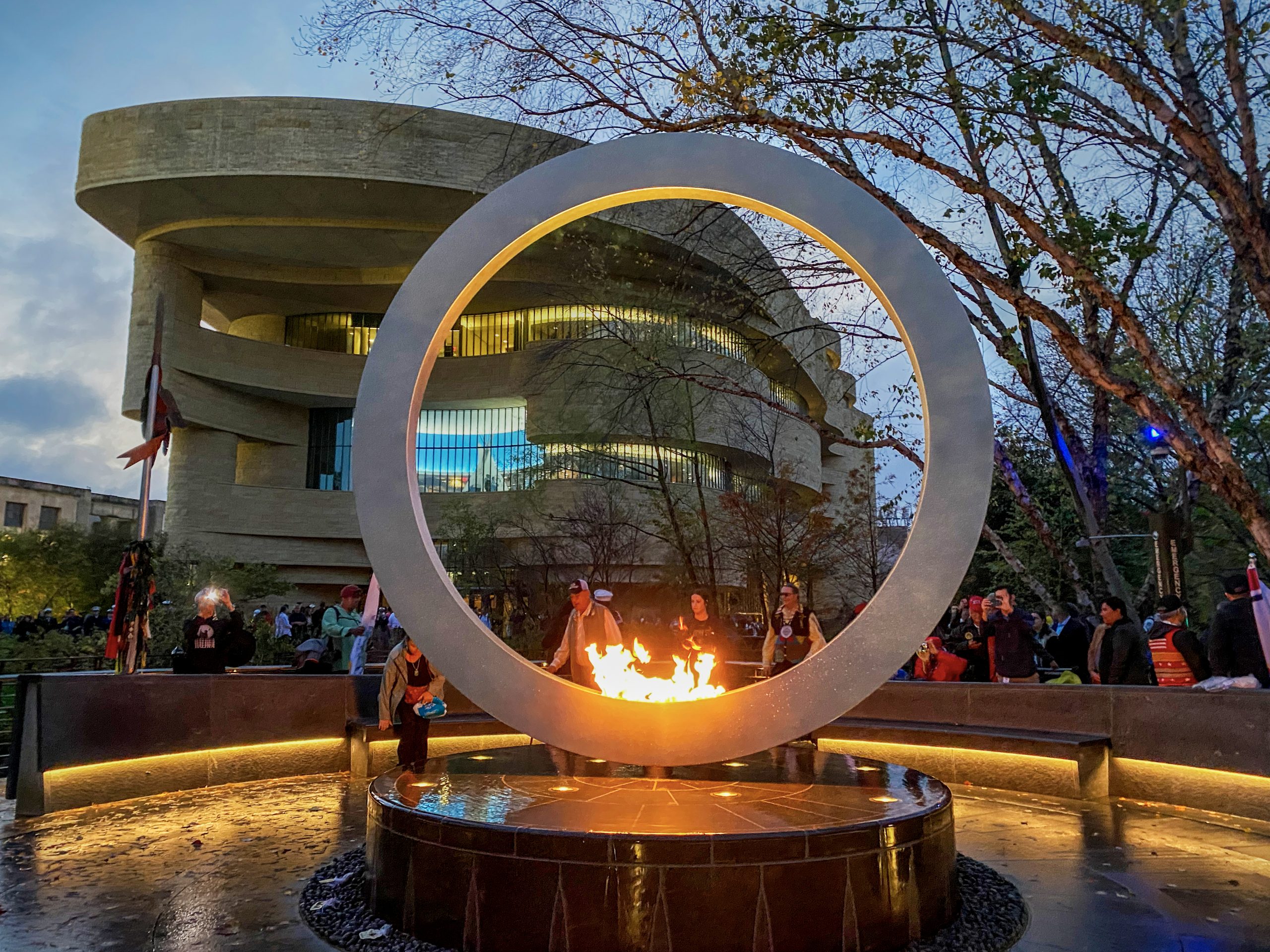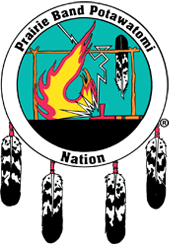Members of We-Ta-Se American Legion Post 410 spent Veterans Day weekend in Washington, D.C., to participate in the dedication of the National Native American Veterans Memorial. On Veterans Day, the We-Ta-Se Color Guard joined more than 1,500 Native veterans representing nearly 125 tribes and communities to march in the Native Veterans Procession on the National Mall. The procession route began at the Smithsonian’s National Museum of the American Indian and ended directly east of the Capitol. Following the procession, We-Ta-Se members attended the Memorial’s Dedication Ceremony, which featured a blessing by Vietnam veteran Robert Short (Kiowa), musical performances, and addresses from speakers including Cynthia Chavez Lamar (San Felipe Pueblo/Hopi/Tewa/Navajo), director of the National Museum of the American Indian; Rep. Sharice Davids (Ho-Chunk), U.S. representative from Kansas’ 3rd congressional district; and Harvey Pratt (Cheyenne and Arapaho), designer of the Memorial.

The We-Ta-Se Color Guard stands at parade rest in front of the U.S. Capitol in Washington D.C. after marching in the Native Veterans Procession on Nov. 11, 2022. From left to right – Joseph “Zeke” Rupnick, Chuck Wahweotten, Robert “Mimis” Jackson, and Charles “Wishkeno” Wakole.
The National Native American Veterans Memorial was completed and unveiled on Nov. 11, 2020, but the official dedication was delayed until this year due to the Coronavirus pandemic. Pratt’s design concept for the Memorial, entitled “Warriors’ Circle of Honor,” was selected from more than 120 submissions. The Memorial features a large stainless-steel circle elevated above an intricately carved stone drum, with running water, a ceremonial flame, and four lances on which veterans, family members, tribal leaders, and others can tie prayer cloths. Pratt said that his design utilized the four elements of earth, air, water, and fire because of their universality.
“We know that if my grandfather came here, he would recognize these elements,” Pratt said during the Dedication Ceremony. “And our warriors today recognize these elements, and my grandchildren’s grandchildren will recognize these elements.”
Pratt, like many other speakers at the Dedication Ceremony, is a veteran himself, having served in Vietnam from 1962 to 1965 as a U.S. Marine in Air Rescue and Security stationed at Da Nang Air Base. Throughout the Dedication Ceremony, speakers emphasized the unique, complex history of Native American military service, highlighting that Native Americans serve at higher rates than any other ethnic group and have also served in every major conflict since the Revolutionary War. Sen. Daniel Sullivan of Alaska referred to Native veterans’ service in his address as an example of “special patriotism” for a country that has not always accepted or respected them.
In attendance at the Dedication Ceremony was Thomas H. Begay (Navajo), a 98-year-old veteran who served as a U.S. Marine and Code Talker during World War II. The Navajo Code, which was used to convey encrypted messages in the Pacific Theater and played a vital role in defeating Japan, is the only military code in modern history that was never broken.

Visitors view the National Native American Veterans Memorial in front of the National Museum of the American Indian after the Dedication Ceremony on Nov. 11, 2022. The ceremonial flame is lit on Veterans Day, Memorial Day, and other occasions that honor the sacrifice and service of Native veterans.
“In both World Wars, Native American language tangibly helped the U.S. to victory,” Lonnie Bunch, Secretary of the Smithsonian, said in his address. “These were the same Native tongues that the United States government tried to eradicate in boarding schools.”
The National Native American Veterans Memorial and its Dedication Ceremony represent the long-overdue recognition that Native veterans deserve for their service and sacrifices. Pratt said he envisions the Memorial as a place for “gathering, remembrance, healing, and reflection.”
Although the day was rainy, at one point during the Dedication Ceremony, a rainbow broke through the clouds above the Capitol.
“I do want to acknowledge that, during the invocation, while Mr. Short was blessing all of us, the Creator blessed us with a rainbow above the Capitol,” Rep. Davids said at the beginning of her address. “And I think that’s really fitting, because it’s such an honor today to celebrate our veterans from all of our Indigenous, Native communities in this country. Thank you for your service.”
Apart from the Native Veterans Procession and the Memorial’s Dedication Ceremony on Veterans Day, the National Museum of the American Indian offered additional programming over the weekend to honor and celebrate Native veterans, including extended museum hours, film showings, and hands-on activities. The Museum also hosted events throughout November for Native American Heritage Month.
On Saturday, Nov. 12, members of We-Ta-Se visited Arlington National Cemetery, the final resting place for over 14,000 veterans, and viewed the changing of the guard at the Tomb of the Unknown Soldier. The following day, the group toured the National Mall to see the Lincoln Memorial, the Washington Monument, and the White House.
Members of We-Ta-Se previously had the honor of leading the procession for the Prairie Band Potawatomi Nation at the public opening of the Smithsonian’s National Museum of the American Indian in Washington, D.C., on Sept. 21, 2004. The We-Ta-Se Color Guard performs at approximately 45 events annually, often traveling all over the state of Kansas and to some functions nationwide.
We-Ta-Se member Chuck Wahweotten, who marched in the Native Veterans Procession as part of the Color Guard, said, “We’re able to do all of this because of our Tribe’s casino and leadership. We’re very fortunate to have those resources and support.”
